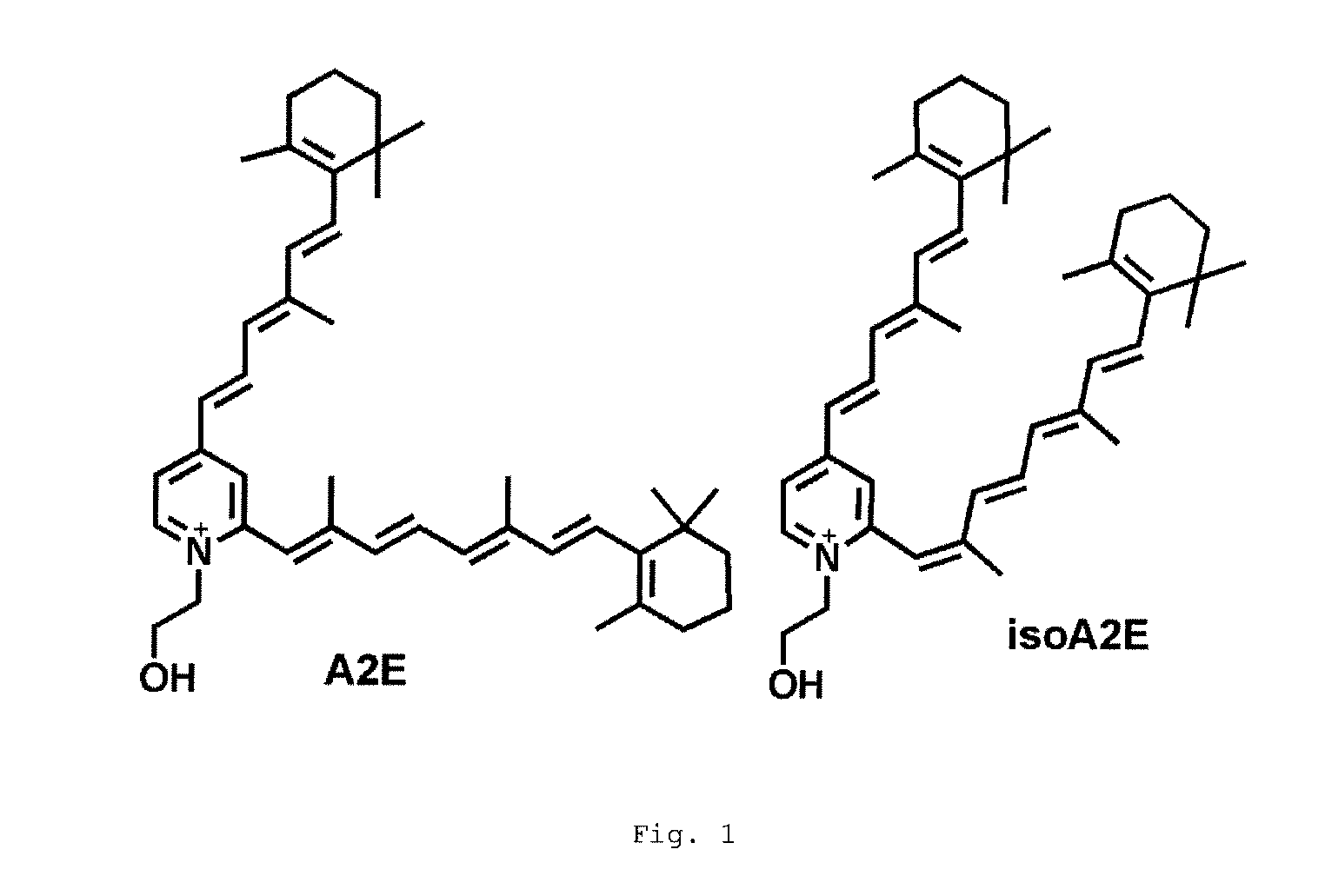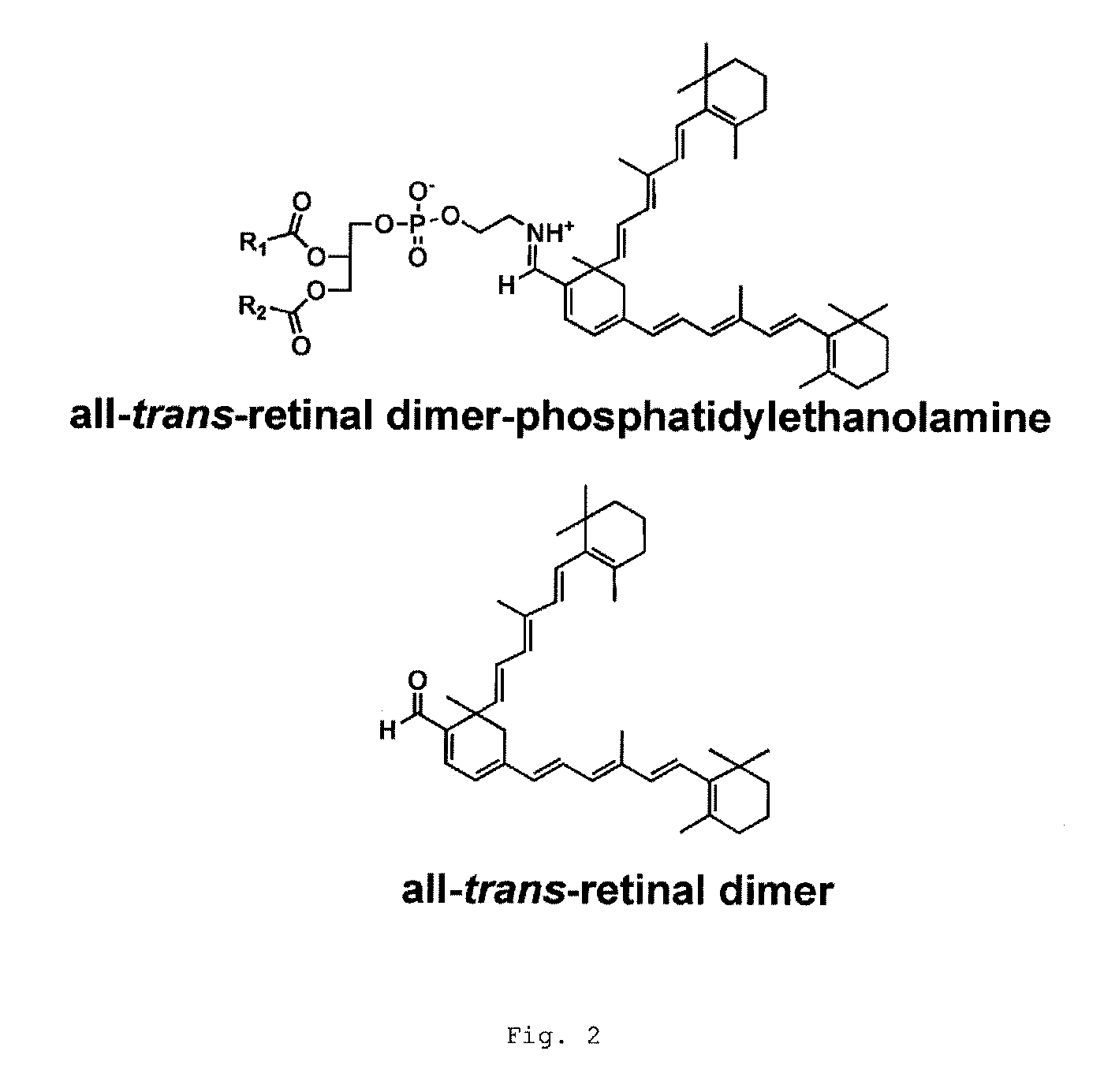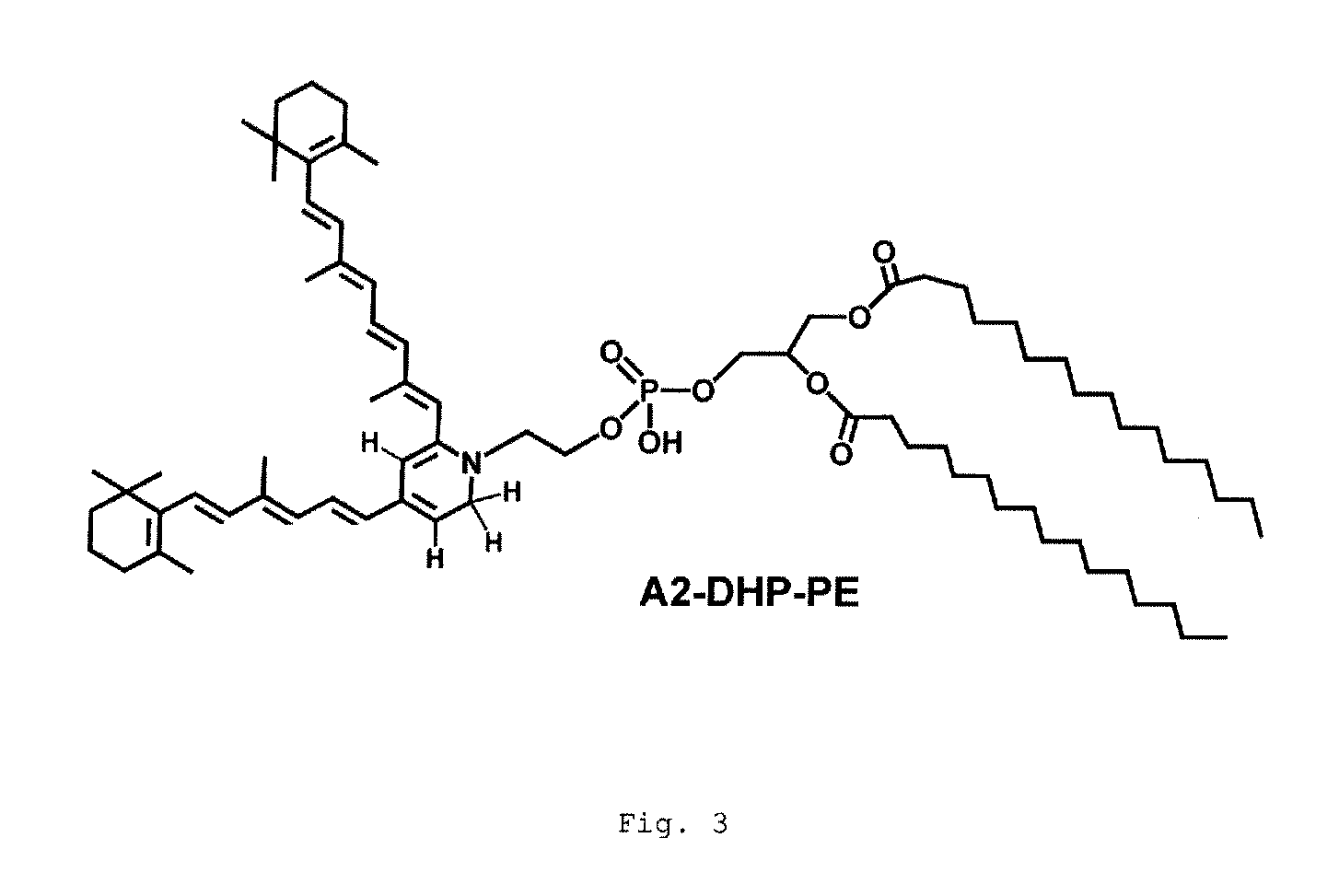Non-retinoid antagonists for treatment of age-related macular degeneration and stargardt disease
a technology of stargardt disease and non-retinoid antagonists, which is applied in the field of non-retinoid antagonists for treatment of age-related macular degeneration and stargardt disease, can solve the problem of not being approved for dry amd treatment by the fda
- Summary
- Abstract
- Description
- Claims
- Application Information
AI Technical Summary
Benefits of technology
Problems solved by technology
Method used
Image
Examples
example 1
Synthesis of Compound 1
[0095]The compound 2(4-(2-(trifluoromethyl)phenyl)piperidine-1-carboxamido)benzoic acid has the structure:
termed “Compound 1” herein, and was obtained from Sigma (Sigma-Aldrich Corp., St. Louise Mo., USA, Catalogue No. A3111). Compound 1 is described in PCT / US2011 / 061763, the contents of which are hereby incorporated by reference.
[0096]Compound 1, has also been called A1120 and may be made by the following techniques described in Motani et al., 2009 as follows: A solution of methyl 2-isocyanatobenzoate (10.00 g, 56.4 mmol) in tetrahydrofuran (30 ml) was slowly added to a solution of 4-(2-(trifluoromethyl)phenyl)piperidine hydrochloride (14.3 g, 53.8 mmol, Sigma) and triethylamine 99% (8.99 ml, 64.5 mmol) in tetrahydrofuran (120 ml) at 0° C. The mixture was removed from the cooling bath and stirred at room temperature for 15 min, at which time LC / MS analysis indicated that the reaction was complete. EtOH (75 ml) and aqueous LiOH (2N, 95 ml) were then added, and...
example 2
TR-FRET Assay for Antagonists of Retinol-Induced RBP4-TTR Interaction
[0097]TR-FRET (Time-Resolved Fluorescence Resonance Energy Transfer) is an assay format that can be used in characterization of compounds affecting protein-protein interactions (31-33). The HTRF (Homogeneous Time-Resolved Fluorescence) variant of TR-FRET is the most advanced as it has improved light capturing due to the use of Eu3+ cryptates. In the presence of retinol, RBP4-TTR interaction induces FRET that can be registered as increased ratio of 668 / 620 fluorescence signals. Binding of a desired RBP4 antagonist displaces retinol and induces hindrance for RBP4-TTR interaction resulting in the decreased FRET signal (FIG. 7).
[0098]The assay was developed using E. coli-expressed MBP-tagged RBP4 and commercially available TTR labeled directly with Eu3+ cryptate. In addition to MBP-RBP4 and Eu3+ (K)-TTR, a detector reagent anti-MBP-d2 was present in the mix. The assay was first optimized in the agonist mode; sensitivit...
example 3
Compound 1 Efficacy in a Mammalian Model
[0101]The effectiveness of Compound 1 was tested in wild-type and Abca4− / − mice. The Abca4− / − mouse model manifests accelerated accumulation of lipofuscin in the RPE and is considered a pre-clinical efficacy model for a drug reducing lipofuscin accumulation. Compound 1 was orally dosed for 3 weeks at 30 mg / kg. There was approximately a 70% reduction in the serum RBP4 level in treated animals (FIG. 11). Additionally, it was discovered that that the levels of A2E / isoA2E and other bisretinoids were reduced by approximately 50% in treated mice (FIG. 12). The levels of A2-DHP-PE and atRAL di-PE were also reduced. These preclinical efficacy data show that Compound 1 is a potential small molecule treatment for dry AMD and Stargardt's disease.
Tissue Extraction and HPLC Analysis of Bisretinoids
[0102]Abca4 / Abcr null mutant mice (albino) homozygous for Rpe65-Leu450 are bred genotyped and housed. Posterior eyecups of mice and RPE / choroids harvested from h...
PUM
| Property | Measurement | Unit |
|---|---|---|
| temperature | aaaaa | aaaaa |
| time | aaaaa | aaaaa |
| time | aaaaa | aaaaa |
Abstract
Description
Claims
Application Information
 Login to View More
Login to View More - R&D
- Intellectual Property
- Life Sciences
- Materials
- Tech Scout
- Unparalleled Data Quality
- Higher Quality Content
- 60% Fewer Hallucinations
Browse by: Latest US Patents, China's latest patents, Technical Efficacy Thesaurus, Application Domain, Technology Topic, Popular Technical Reports.
© 2025 PatSnap. All rights reserved.Legal|Privacy policy|Modern Slavery Act Transparency Statement|Sitemap|About US| Contact US: help@patsnap.com



